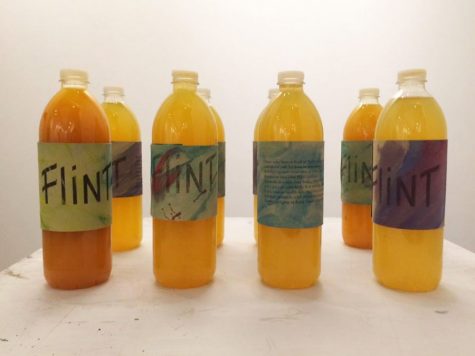Flint Water Crisis – An Overview
People participate in a national mile-long march in February to highlight the push for clean water in Flint, Mich.

A family living in Flint, Michigan turns on their shower to find that the supposed water coming out of the nozzle suddenly appears brown and unclean. However, the tragedy does not stop there: water from sinks and drinking water are all filthy, forcing citizens of Flint and their children to bathe in and drink the filth. Yet this is only one family out of the 100,000 who were exposed. Water, a basic necessity, is taken away during the Flint Michigan Water Crisis, and citizens are scared to even give the water to their dogs. Everyone in Flint was asking each other the same question: why is this happening?
To answer this question, we have to go back to 2011 when General Motors, a major auto labor company and a major contributor to employment to the region, plummeted and crashed. Many lost their jobs, and the city developed a debt of 25 million dollars. In order to compensate and cut costs, Flint brought in an emergency manager. The manager switched from pumping water from Detroit to pumping water from Flint Lake since it was cheaper, and they would no longer have to pay for the expensive Detroit water. However, Flint Lake was already heavily polluted due to the amount of pollutants factories pumped into the lake, and the mix of pollutants and lead from lead pipes brought unsanitary water into homes.

More residents complained about the mysterious particles and brown-colored water, but the city claimed that it is normal. Outside investigators finally tested the water, finding samples with dangerously high lead levels. Appalled, citizen Melissa Mays presented a lawsuit to the city demanding the testing of water, treatment for any conditions caused by the uncleanliness of water, and replacement of lead pipes. Due to the city’s lack of recognition of unclean harmful water, residents were living with lead-contaminated water that caused medical conditions and diseases for 18 months. One disease caused by lead-contaminated water is legionnaires disease, a type of pneumonia, killing 12 and sickening 87. To combat the lead, the city tried to mix chlorine in the water as a disinfectant; however, this attempt only made matters worse. Chlorine can increase chemicals that increase the risk of cancer putting many lives at risk.

After the people of Flint sued the city for not attending to their basic human rights, the water quality tremendously improved. This effort paid off as people started to have access to drinking water through a bottled water delivery and programs to help filter water. The state developed movements to replace lead pipes and provide healthcare to those affected. Although few lead pipes still remain, Flint’s water quality has greatly improved: the water is now clean, the regular clear color, and smelling back to normal.

Sarita Manocha, a senior, has found a passion for writing throughout her years at Keystone. In Keynote Sarita spreads awareness and brings to attention...

